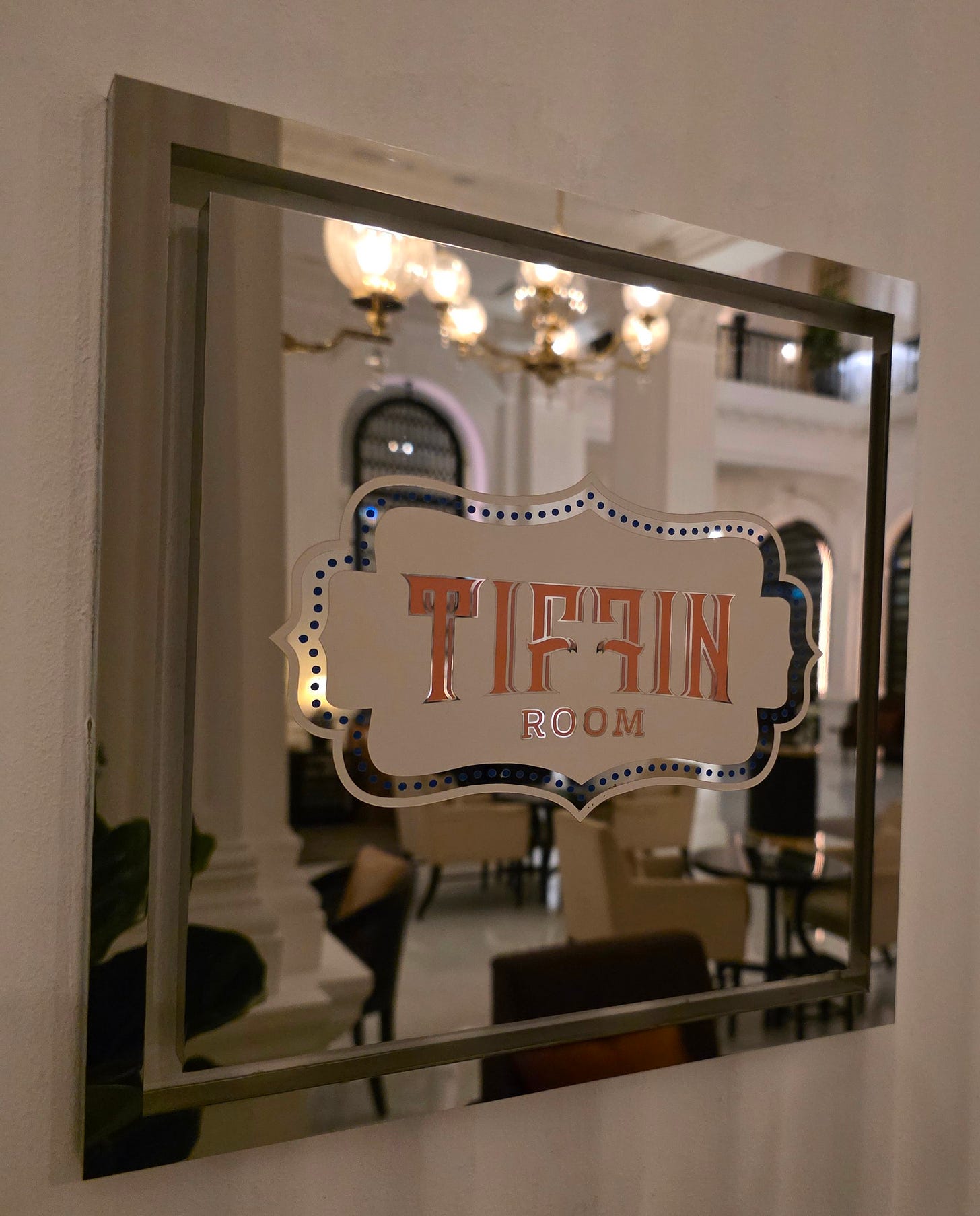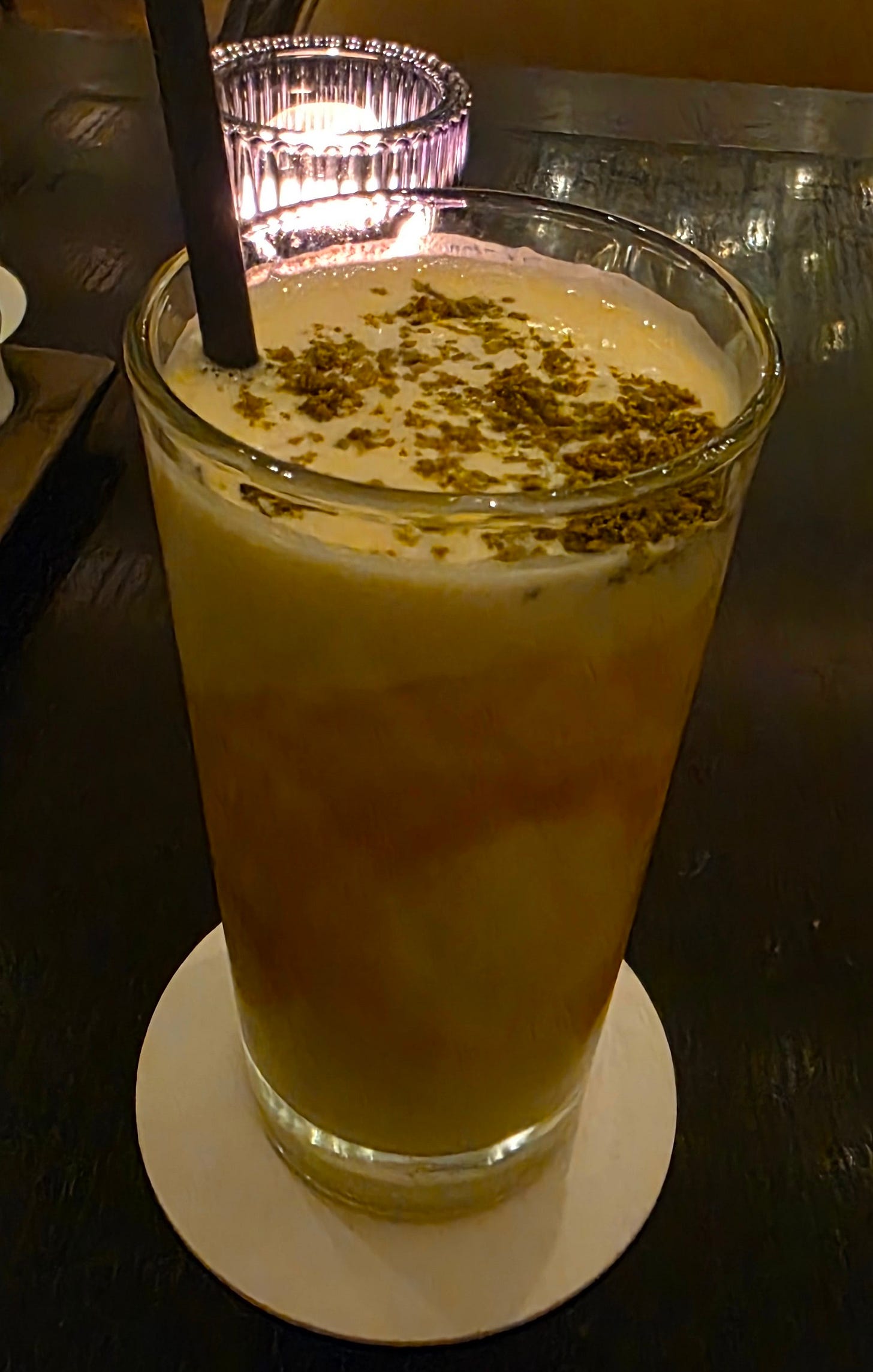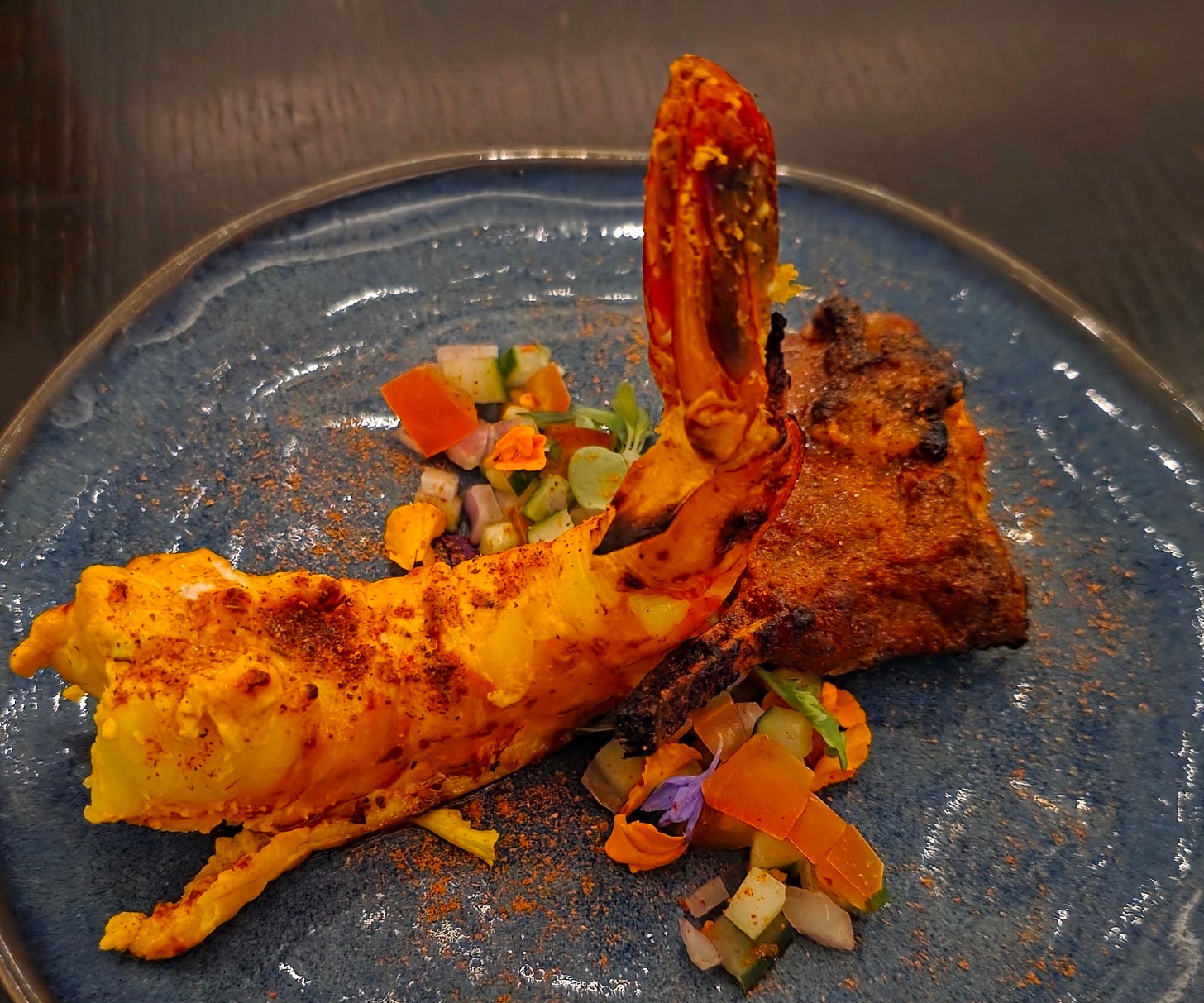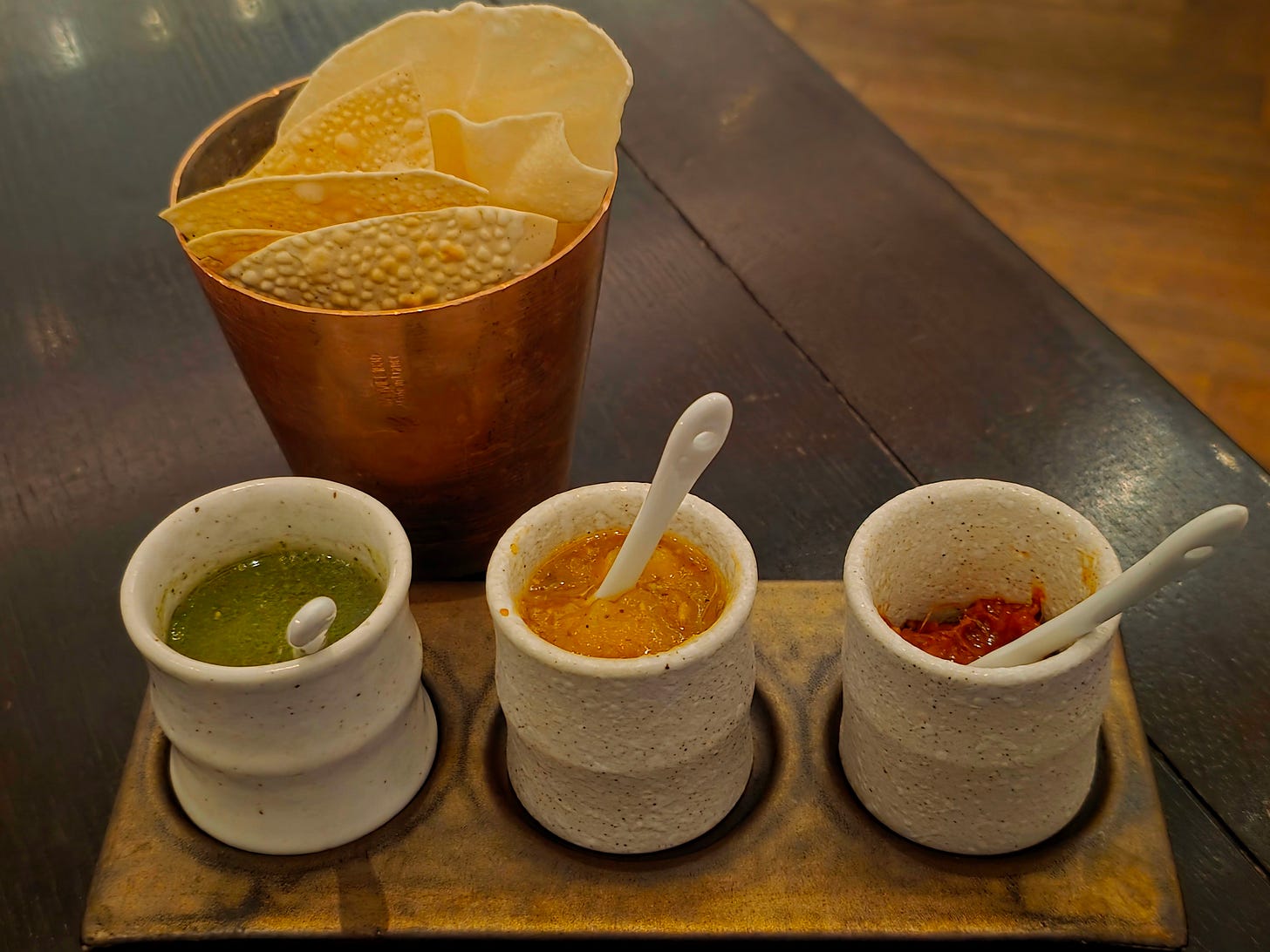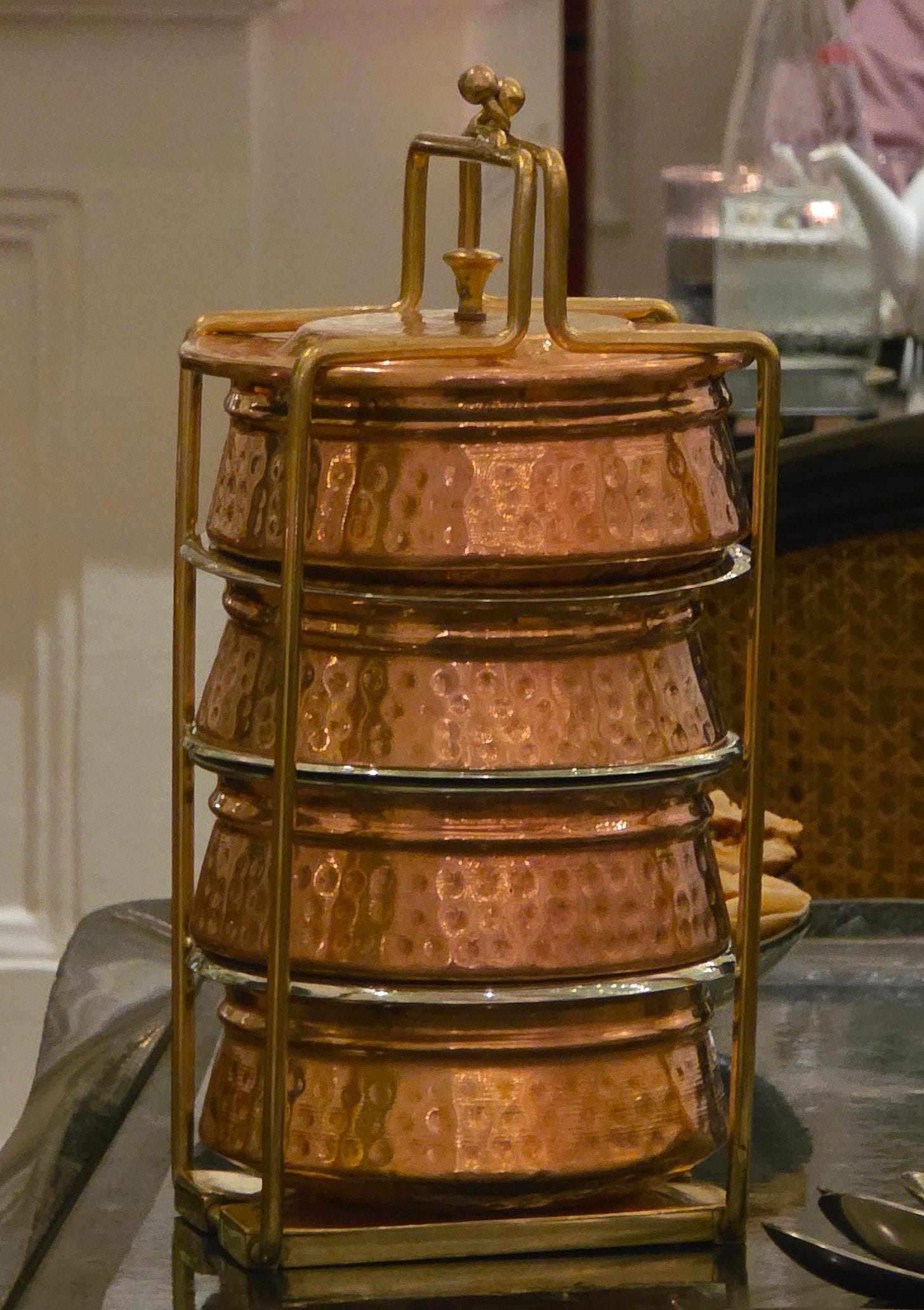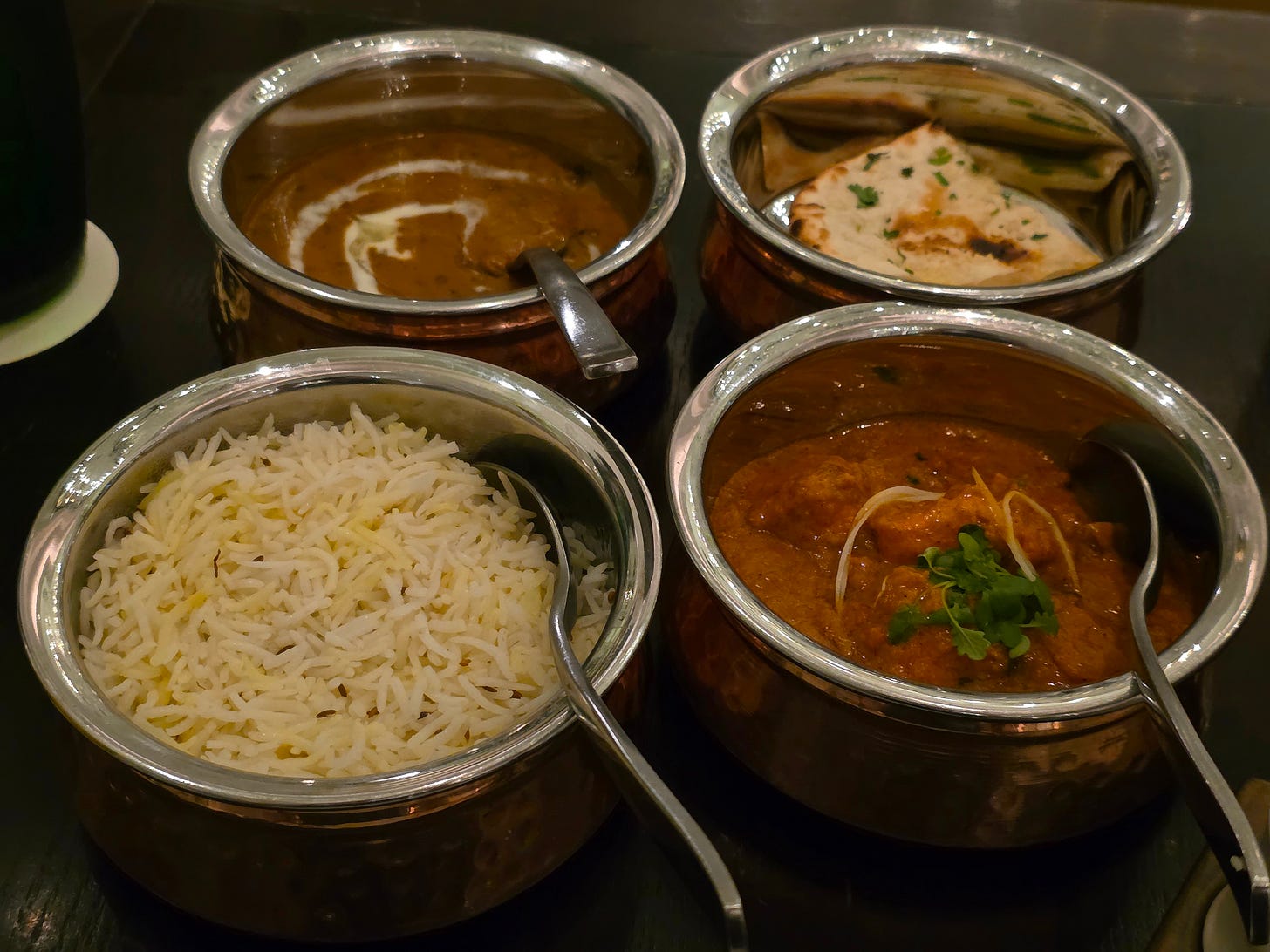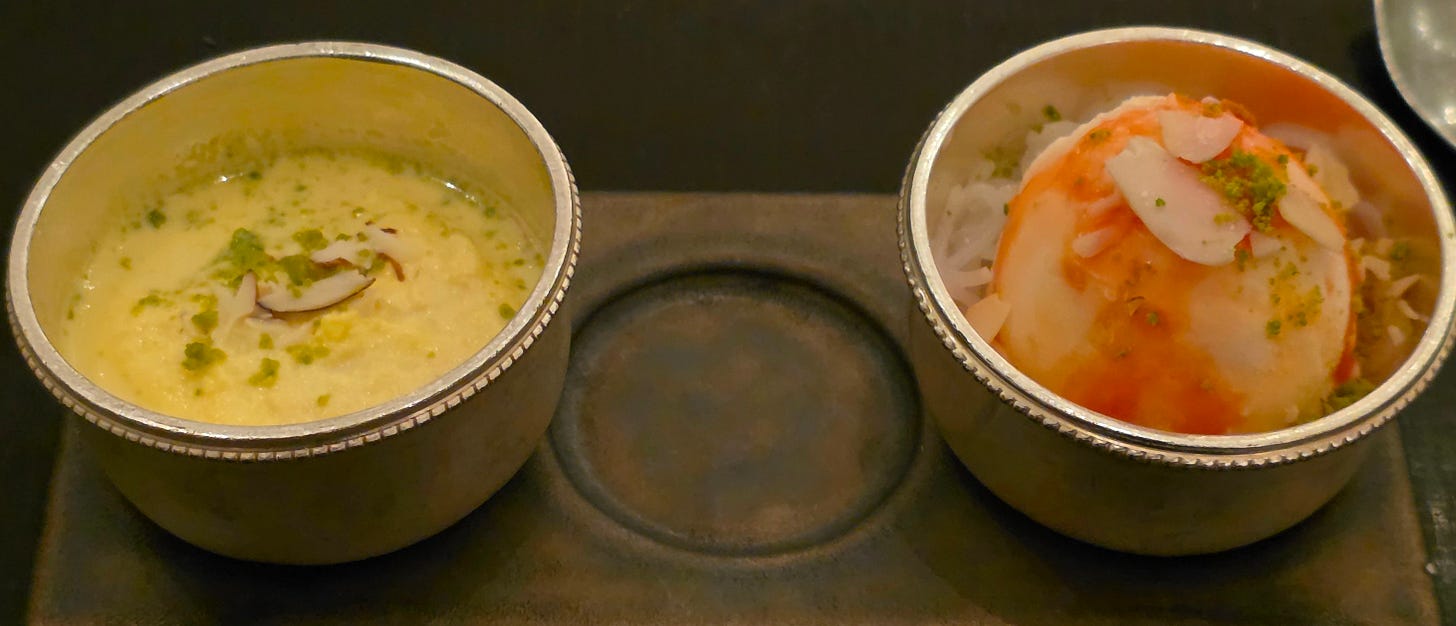Arriving at Singapore late at night, I didn’t have time to find a restaurant and decided to just to eat at my hotel. Fortunately, the dining options at my hotel included some iconic Singaporean landmarks.
Established in 1892, the Tiffin Room has long been a cornerstone of the Raffles Hotel’s culinary offerings, originally serving as the hotel’s main dining hall. It wasn’t until 1976 that it was officially named the Tiffin Room, in a nod to the colonial tradition of enjoying tiffin curries, which was popular in the early 20th century. The name "tiffin" itself draws from the famous and iconic Indian metal stacked lunchboxes of the same name.
The Tiffin Room specializes in authentic North Indian dishes, celebrating flavors from regions such as Kashmir, Lucknow, Punjab, and Rajasthan. Under the guidance of Chef Kuldeep Negi, who has led the kitchen for over a decade, the menu showcases a blend of traditional cooking techniques and special spice mixes inspired by the royal culinary heritage of the maharajahs.
As always when eating Indian cuisine, I started with a mango lassi, a refreshing, creamy drink made by blending ripe mangoes with yogurt, sugar, and a pinch of cardamom. A smoothie-like treat—sweet, tangy, and cooling—served chilled, with ice. Hailing from the Punjab region, it’s a staple across India and is a global ambassador of Indian flavors, especially in summer when mangoes peak.
I decided to go with the Mera Royal Dabba menu, a set of dishes served within the traditional tiffin containers.
The appetizer had a giant tiger prawn, with a light rub of cardamom and garam masala, and a tiny rack of lamb in a heavier crust of spices, all on a bed of colourful diced pickles to refresh the palate.
After the appetizer, an Indian staple, papadums (thin, crisp, disc-shaped flatbreads made form lentil flour) served with three chutneys:
a fairly standard mint and coriander chutney - fresh, tangy and minty.
a sweet mango chutney combining the sweetness of ripe mango with a bit of tartness from slightly younger mangoes to balance.
a dense, sticky, ultra-spicy lime pickle chutney with depth and complexity, and a heat that lingered on the tongue and built up over time. I was very glad I had my mango lassi at my side that helped dull the intense heat.
The main attraction came next, in a set of stackable tiffin tins. Consisting of four interlocking compartments held together by a clasp, each compartment held a different dish.
In India, tiffins are a lunchbox staple, designed to keep home-cooked food fresh and warm for hours. They’re historically tied to the dabbawalas of Mumbai—delivery workers who ferry thousands of tiffins from homes to offices daily with near-perfect efficiency.
Once disassembled, the four dishes were revealed:
Chicken Tikka Masala - rich, creamy dish featuring chunks of marinated, grilled chicken (tikka) simmered in a spiced tomato-based sauce, flavoured with garam masala, turmeric, cumin, and a hefty dose of cream or yogurt. A good balance of tangy, spicy, and mildly sweet notes.
Dal Makhani—a creamy, indulgent lentil dish from the Punjab region of India. Slow-cooked and made with whole black lentils (urad dal) and a rich mix of butter, cream, and spices. The name "makhani" means "buttery" in Hindi, and this dish lives up to it with its rich, velvety texture and deep, smoky flavor. It’s a staple in Punjabi cuisine.
Basmati Rice - a long-grained rice with nutty flavours and a fluffy, dry texture. It forms a base on which to mix curries and the fluffiness of the rice contrasts with the dense richness of the curry. Often steamed with cardamom, cumin seed or star anise to impart additional aroma in Indian cooking.
Garlic Butter Naan - a flatbread made from wheat flour that puffs up slightly when cooked in a roaring hot clay tandoor oven. The intense heat of the tandoor cooks the naan quickly leaving a soft, chewy interior, while getting a golden toasted, blistered exterior. Brushed with a bit of garlic and ghee, it’s a delicious medium to transfer curry from plate to mouth!
For dessert, a small bowl of Rasmalai and Kulfi, two classic Indian desserts.
Rasmalai - a small dumpling of fresh cheese kneaded into small balls and gently simmered in a sugar syrup until they puff up and become spongy. The dumplings are then soaked in a chilled, spiced, thickened milk syrup. The dumplings are light and airy, with floral notes from cardamom and saffron, and a bit of tang from the cheese. Together with a light sprinkling of crushed pistachios for texture, it’s a uniquely Indian dessert.
Kulfi - a traditional Indian frozen dessert similar to ice cream but denser, creamier, and distinctly its own. Unlike Western ice cream, which is churned for a light, airy texture, kulfi is made by simmering milk until it thickens, sweetening it, flavoring it, and freezing it without whipping in air. The result is a dense, solid treat that melts slowly on the tongue. The Kulfi was served on a bed of grated coconut and almond slices for texture and topped with a rose syrup.
I tend to really enjoy Indian food, even though I don’t get it often these days. Indian curries are packed with flavour, and I particularly enjoy a good paneer saagwala (paneer in spinach curry), dal makhani or butter chicken served with some piping hot naan. Unfortunately, all those dishes are chock full of butter and cream, and it takes a toll on my waistline. That said, when I do get to try a new Indian restaurant, I enjoy it to the utmost, and The Tiffin Room is a great showcase of Indian cuisine, particularly in the colonial Singaporean context.
Total Damage: 180 SGD/1 person




